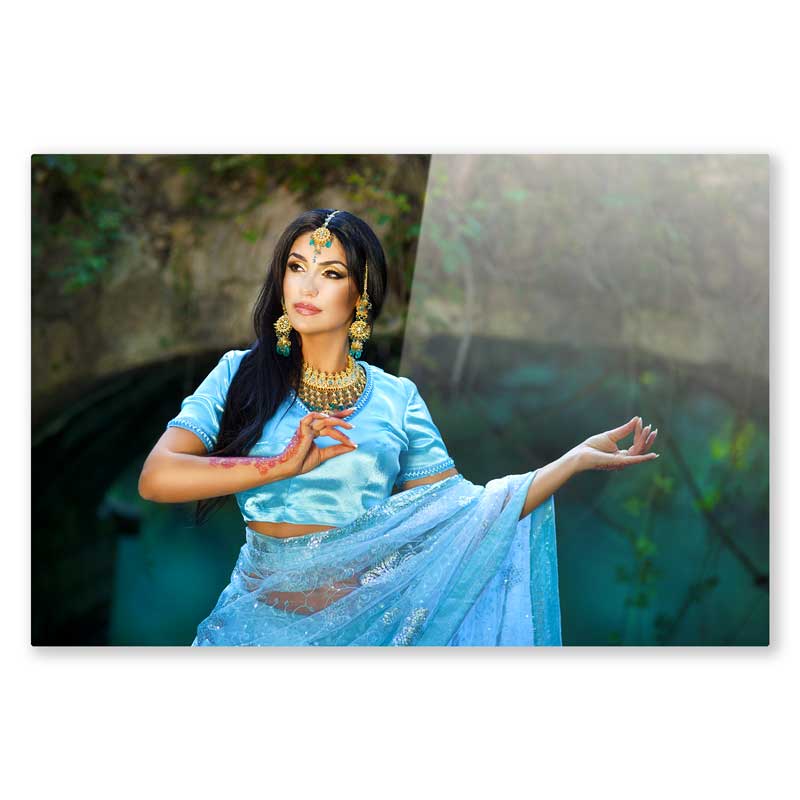We are always asked which paper is the best to choose. I usually answer that people should try the different papers and decide on their own which they believe best compliments their artwork. But I also need to clarify not all paper is going to appear to be the same as is obvious if you have ordered one of our starter kits which includes a sampling of the different paper types we print offer. There are three areas where I believe the properties of the paper can have a big impact on the quality of the image being printed: paper texture, paper absorption level and paper brightness.
I have talked about all three at various times but I like to bring them all together in one discussion and use some points to illustrate this.
Paper texture is going to be the area of concern for most people. What I mean is this tends to become a polarizing factor for many of our customers. Some absolutely love textured paper for their fine art and photography while others abhor any texture. What is fascinating to me is how little role texture has when it comes to the overall quality of the print. That is primarily due to the technology behind the printing. The inks are sprayed or squirted onto the paper from a fraction of an inch above the paper’s surface which makes it possible for the inks to settle onto the cracks and crannies. This is one reason the giclee process is very versatile since it does not rely on pressing an image onto the paper’s surface therefore it allows for absolute coverage. When texture does pose a problem it can usually be attributed to directional light sources being too extreme. As a quick example, there was a customer who picked up her prints from our production facility a while back. I happened to be in the front when she came in so went to go get her prints for her. They were photographs she printed on our Premium Giclee Paper which is our most textured paper and second most popular paper. My first inclination when seeing the prints was they looked a little washed for photography out but that was not the case when I got close enough to see them at a different angle. It just happened that the light was hitting them at a harsh direction making the texture really stand out. When I picked them up they looked fine. The texture was visible but the direction of the light was no longer making the texture over power the image.
Paper absorption levels can be tricky at times and warrants more consideration than texture. Take for instance our Fine Art Paper which is milled by the St Cuthberts Mill in Somerset, England, hence it is officially named Somerset Enhanced Velvet. While the paper has some texture, the texture gives a more velvet like feel. Because of that, inks are not going to settle on the top of the surface as much but bond to fibers deeper in the paper. On the technology front that means the printers have to lay down more ink but may have less contrast in your darker tones than you otherwise would have on a glossy less absorbent surface where the inks stay closer to the top. Perhaps the best example I can give is with canvas. A lady who owned a small graphics shopped approached us to do canvas prints because all the ones she was producing looked washed out. She had a old wide format inkjet printer which should have still been fine but it turned out that she thought she would save money by printing on rolls of canvas she bought at an art supply store. I had to tell her that the problem had nothing to do with her printer but the fact that she was printing on a media that was not conditioned to hold the inks close to the surface. I then explained that the canvas we printed to was was coated with an ink receiving agent which made sure the inks did not bleed into the canvas.
Paper brightness plays the biggest role in an image quality. There tends to be a little give and take here because paper brightness is reliant on optical brighteners or bleaching agents in the primer on the ink receiving side of the paper. While these OBA’s have come a long way, generally the higher the white point the less archival a paper is since those OBAs will break down over time. That does not mean you have to worry about your print deteriorating any time soon but it could mean the difference in a print which will last 125 years without fading versus 150 years. While you may get a less archival print the brighter the paper is, usually you get a wider gamut print which means you have a wider range of possible colors that it can display. For instance our archival matte paper is technically the least archival paper since it has the brightest white point. On the other hand, our ultrasmooth fine art paper which has zero brighteners is going to be the most archival.
Overall these differences in paper properties will play some role in how your image appears. Thankfully the papers are engineered to display the best possible image when printed with our printers. Because of that fact it is rare people are dissatisfied with the print quality they receive. When they are usually experimenting with a different paper type for the particular image will help bring their prints to a level of satisfaction they are looking for.
Acrylic Glass Prints
Transform your space with our sophisticated Acrylic Glass Prints, featuring exceptional clarity and durability to showcase photography, art reproductions, or commercial applications with modern elegance.
